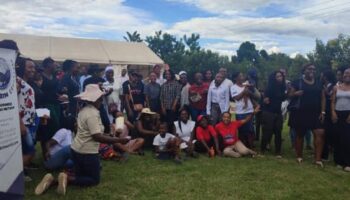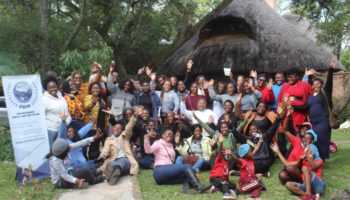by Shikoh Gitau
A story is told of a technology company that creates and deploys life-saving mobile phone services. Based in Cape Town, this technology company developed a revolutionary technology with a mission to assist community health workers from the local township to better monitor their HIV-positive patients. The mobile application fulfilled all the usability requirements; it was easy to use, adoptable to local language, and solved a vey specific use. On launching the services, it was a flop. Further studies indicated that, while all the technical and social requirements were met, and community health workers were excited at the prospect of using it, they were not using it. The question there was: What had gone wrong?
Before I explain, I will share another anecdote. Recently I was engaged in a heated discussion on the role of technology for development. The mostly older, Western-educated male audience, while largely reluctant to adopt technology in some areas, was open to the idea that technology could make a difference, which came as a pleasant surprise to me. However, that is as far as the pleasantries reached, because the next statement was, “Women, Technology, Rural and Africa… what do you mean? That is an oxymoron! We should just forget that and invest on the urban youth, those are the catalyst to development, and they are the future.” This statement sent a chill down my spine. Is it really an oxymoron?
One thing is clear, African women remain largely unaccounted for in the technology sector. The gap in all spheres – leadership, labour force and usage – is wider than the world average. What is causing this digital gender gap? Is it lack of the correct technology? Is it lack of relevant content online, or is it due to the long-held myth that girls are just not good enough to pursue science, technology, engineering and math, the so-called “STEM careers”; nor to use technology, much less in the technological field? But the even bigger question is: Can anything be done to reverse this trend?
In January, the African Development Bank, hosted an invigorating roundtable with the theme “Women and Technology: Increasing Access, Use, Employment and Leadership” in the Bank’s South African Resource Centre (SARC). The roundtable brought together the visiting delegation of TechWomen, with some of the leading voices for women and technology in South Africa. TechWomen is a US State Department-funded program, whose goal is to increase the number of women technology entrepreneurs in the global south through training and mentorship. The delegation was made up of senior women in leadership in the Silicon Valley.
The objective of the roundtable was to discuss ways in which the represented companies, organizations and individuals would approach the issue to increase the holistic participation of women in technology. Everyone at the table was already a converted advocate and activist on the issue. However, the questions raised included: What are the similarities in challenges across the Atlantic? What lessons can be learned from each of the experiences? And what are the possible areas of collaboration and partnership?
The issue of cyber security, especially for young girls who were accessing the Internet for the first time, was a cross-cutting theme. The participants, especially those who were mothers, voiced concerns about how to ensure the safety of their children online even on the simplest of phones.
There was also a discussion around education and possible policy, curriculum and structural interventions to attract and retain the number of women who pursue science, technology, engineering and math (STEM) from grade school, through to tertiary institutions. Pointing out examples such as Harvey Mudd College, which has seen an increase of women taking computer science. Additional actions suggested was close collaboration with governments, and special incentives to universities to increase the number of women pursuing STEM.
A major source of discussion was the design of technology and, as one participant pointed out, “it is very hard for an all pale male design team, to have the perspective of a mahogany female” referring the design teams of many of the widely used technology. The context that determines if an African female will be a technology user is complex concoction of culture, socialization, infrastructure and education, to mention just a few. These are issues that may not all be well understood through a survey or usability studies, but rather through a real-life experience and only an African woman could fully express her perspective, and those of women like her. It was therefore pointed out that there is a need for more African women to either be creating the technologies, or to be part of teams creating technology.
Adoption of some of the suggestions that came out of the discussion is a priority for the Bank. These included the creation of special internships and scholarship tracks to catalyze the increase of women in the workforce, working with governments and educational institutions to adopt some of the best practices to ensure that they attract and retain women in the STEM fields of work, and supporting women to innovate and start their own technology businesses. It is important to demonstrate why women and especially rural women should be using technology. For instance, women form over 60% of the Africa rural population, are responsible for approximately 75% of the agricultural labour, and produce 60% to 80% of the food[1]. Evidence shows that, if they had the same access to productive resources including technology as men, they could increase their yields, raising total agricultural output, in turn reducing the number of hungry people in the world. Finally, there is the case of role models: showcasing some of the women who are already working in the STEM fields on the continent is important to motivate young girls, who otherwise lack someone to look up to.
Going back to the story of community health workers in South Africa and the live-saving application I started with, Lerato, a 32-year-old community health worker who lives in Gugulethu, has to walk to work in Khayelitsha Township, where Siba and her family lives. Siba is one of the 15 families affected by HIV under Lerato’s care. The daily commute through the the sprawling township is not safe. To ensure her safety, Lerato often disguises herself by wearing a cloth on her head and conceals all her valuables in her undergarments. The team that created the community health worker application did not take into account the commute and the safety measures that Lerato has to undertake. Further testing did not uncover why the Lerato was not using the service. But when a new design team took over the project, a woman in the team took only a day to discover the problem. The mobile phone that held the application which was issued to Lerato was too big. It could not easily fit into her bra.
![]()





